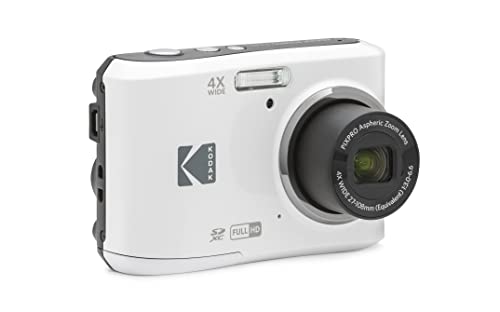




Security cameras play a crucial role in ensuring the safety of your home or business premises. However, sometimes it can be challenging to set up a security camera system in remote locations where traditional Wi-Fi connections are not available. This is where cellular data comes to the rescue.
By utilizing cellular data for your security camera system, you can ensure a reliable and secure connection to monitor your property from anywhere. In this article, we will explore how you can effectively use cellular data for your security camera setup, providing you with peace of mind and enhanced security.
Whether you are looking to monitor a remote construction site, a vacation home, or simply enhance the security of your primary residence, utilizing cellular data for your security camera system can be a game-changer in keeping your property safe and secure.
Benefits of Using Cellular Data
There are several advantages to using cellular data for security cameras:
1. Remote Monitoring
Cellular data allows you to remotely monitor your security cameras from anywhere with a cellular signal. This means you can check in on your property even when you are not physically present.
2. Reliability
Cellular networks are generally more reliable than Wi-Fi connections, as they are not affected by power outages or internet disruptions. This ensures that your security camera system remains operational even in challenging conditions.
Installing a Security Camera System
Installing a security camera system is an important step in enhancing the security of your property. Whether you are looking to monitor your home, office, or any other location, a security camera system can provide you with peace of mind and added protection.
Step 1: Choose the Right Location
Before installing your security cameras, carefully choose the locations where you want to place them. Consider areas that are vulnerable to break-ins or suspicious activity. Make sure the cameras have a clear view of the area you want to monitor.
Step 2: Install the Cameras
Once you have selected the locations for your cameras, it’s time to install them. Follow the manufacturer’s instructions for mounting the cameras securely. Ensure that the cameras are positioned at the right angles to capture clear footage.
| Important Tips: | 1. Make sure the cameras are weatherproof if they will be placed outdoors. | 2. Test the cameras after installation to ensure they are working properly. | 3. Consider using a security camera system that can be accessed remotely for added convenience. |
|---|
Choosing the Right Cellular Plan
When using cellular data for your security camera, it is important to choose the right cellular plan to ensure a reliable connection and cost-effective usage. Here are some factors to consider when selecting a cellular plan:
1. Data Allowance
Look for a plan that offers enough data allowance to support the streaming and recording needs of your security camera. Consider the resolution of the camera, the frequency of recordings, and any other data-consuming activities that may impact your usage.
2. Network Coverage
Check the network coverage in your area to ensure that you will have a strong and stable connection for your security camera. Different carriers have varying coverage maps, so choose a plan from a carrier that offers reliable coverage in your location.
| Plan | Data Allowance | Network | Cost |
|---|---|---|---|
| Plan A | 10GB/month | AT&T | $30/month |
| Plan B | 20GB/month | Verizon | $40/month |
| Plan C | 30GB/month | T-Mobile | $50/month |
Setting Up Cellular Data Connection
Setting up a cellular data connection for your security camera is a crucial step in ensuring continuous monitoring and surveillance. Follow these steps to establish a reliable connection:
- Choose a Compatible Cellular Network: Select a cellular network provider that offers coverage in the area where your security camera is installed.
- Get a Compatible SIM Card: Obtain a SIM card from the chosen cellular network provider that is compatible with your security camera’s specifications.
- Insert the SIM Card: Insert the SIM card into the designated slot on your security camera following the manufacturer’s instructions.
- Activate the Data Plan: Activate a data plan with the cellular network provider that suits your monitoring needs and budget.
- Configure Camera Settings: Access your security camera’s settings menu and configure the network settings to connect to the cellular data network.
- Test the Connection: Test the cellular data connection by monitoring the live feed from your security camera remotely to ensure it is working properly.
Monitoring Your Security Camera Remotely
Once you have set up your security camera to utilize cellular data, you can easily monitor it remotely from anywhere. Here’s how:
1. Accessing the Camera: Use the camera’s dedicated app or web interface to access the live feed and recordings remotely.
2. Notifications: Set up notifications to alert you of any suspicious activity detected by the camera.
3. Remote Control: Some cameras allow you to pan, tilt, and zoom remotely to get a better view of the surroundings.
4. Cloud Storage: Consider using cloud storage services to store video recordings securely and access them from anywhere.
5. Security Measures: Ensure that your camera’s login credentials are secure and change the default password for added security.
6. Regular Check-ins: Make it a habit to check in on your camera regularly to ensure it is functioning properly and capturing the necessary footage.
Ensuring Data Security and Privacy
When using cellular data for security cameras, it is crucial to prioritize data security and privacy to protect sensitive information. Here are some key practices to ensure the security of your data:
1. Encryption:
Ensure that the data transmitted between the security camera and the cloud storage is encrypted using secure protocols. This helps prevent unauthorized access to the data.
2. Strong Passwords:
Use strong, unique passwords for both the security camera and the associated cloud storage account. Avoid using default passwords and regularly update passwords to enhance security.
By following these practices, you can help safeguard your data and maintain the privacy of your security camera footage.
Troubleshooting Cellular Data Issues
If you are experiencing issues with your security camera’s cellular data connection, here are some troubleshooting steps you can take:
- Check your cellular data plan: Make sure your data plan is active and has enough data to support the camera’s usage.
- Signal strength: Ensure that the camera is placed in an area with strong cellular signal reception.
- Restart the camera: Sometimes a simple restart can resolve connectivity issues. Turn off the camera, wait a few seconds, and then turn it back on.
- Check camera settings: Verify that the camera’s cellular data settings are correctly configured, including APN settings.
- Update camera firmware: Ensure that your camera’s firmware is up to date, as updates may include bug fixes related to cellular connectivity.
- Test with another SIM card: If possible, try using a different SIM card to see if the issue is with the camera or the SIM card.
- Contact your service provider: If the issue persists, reach out to your cellular service provider for assistance troubleshooting the data connection.
Future Trends in Cellular Security Cameras
As technology continues to advance, cellular security cameras are expected to become even more sophisticated. Some of the future trends in this area include:
- AI Integration: Cellular security cameras will likely incorporate artificial intelligence algorithms to enhance surveillance capabilities and provide more accurate alerts.
- Cloud Storage: The reliance on cloud storage for footage and data will increase, allowing for easier access to recordings from anywhere.
- Remote Monitoring: Improved connectivity will enable real-time remote monitoring of security cameras through mobile devices, making it easier for users to keep an eye on their property.
- Smart Home Integration: Cellular security cameras will integrate seamlessly with other smart home devices, creating a more cohesive and automated security system.
- Enhanced Privacy Features: With growing concerns about privacy, future cellular security cameras may offer enhanced privacy features to give users more control over their data.
These trends indicate a promising future for cellular security cameras, as they continue to evolve and provide more effective and convenient security solutions.








